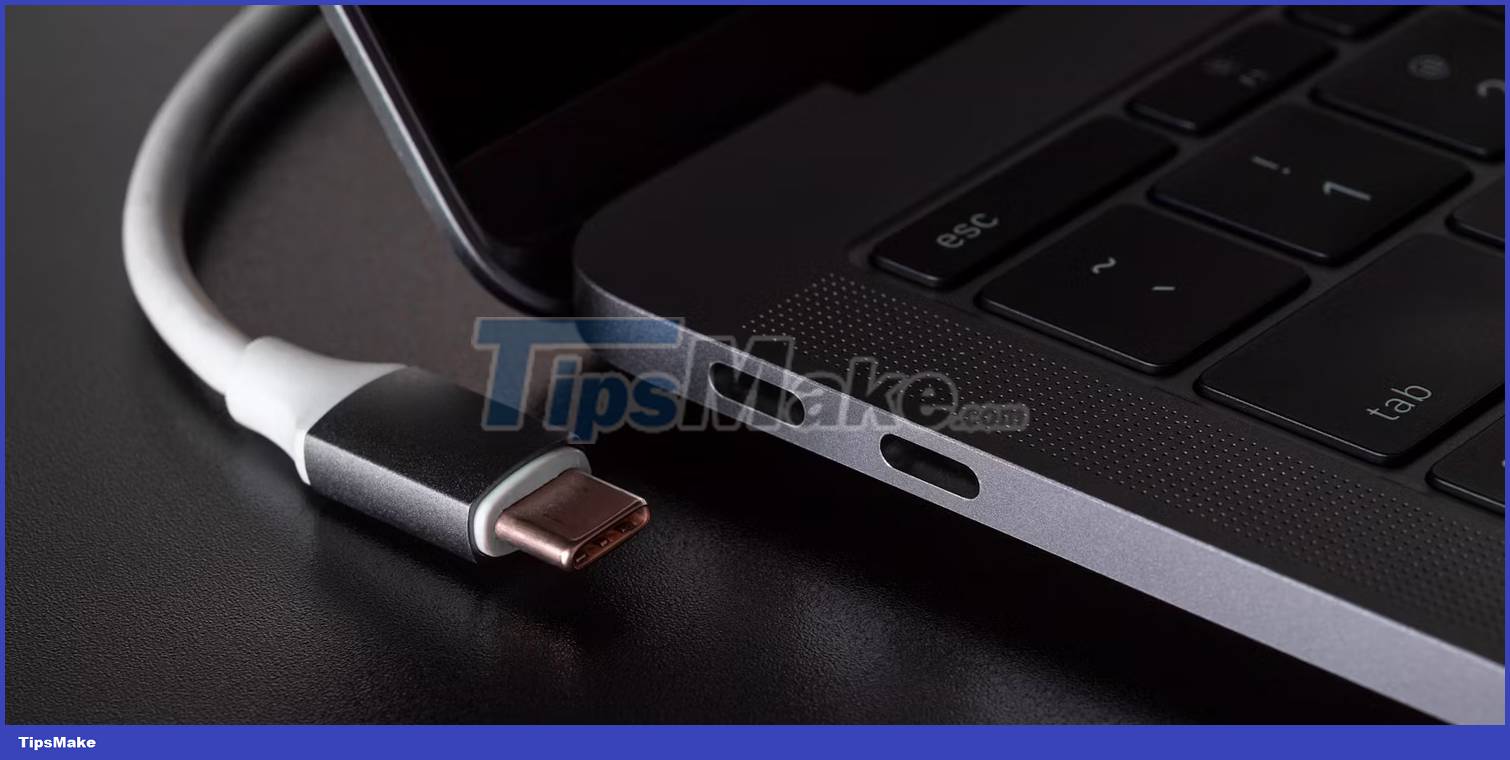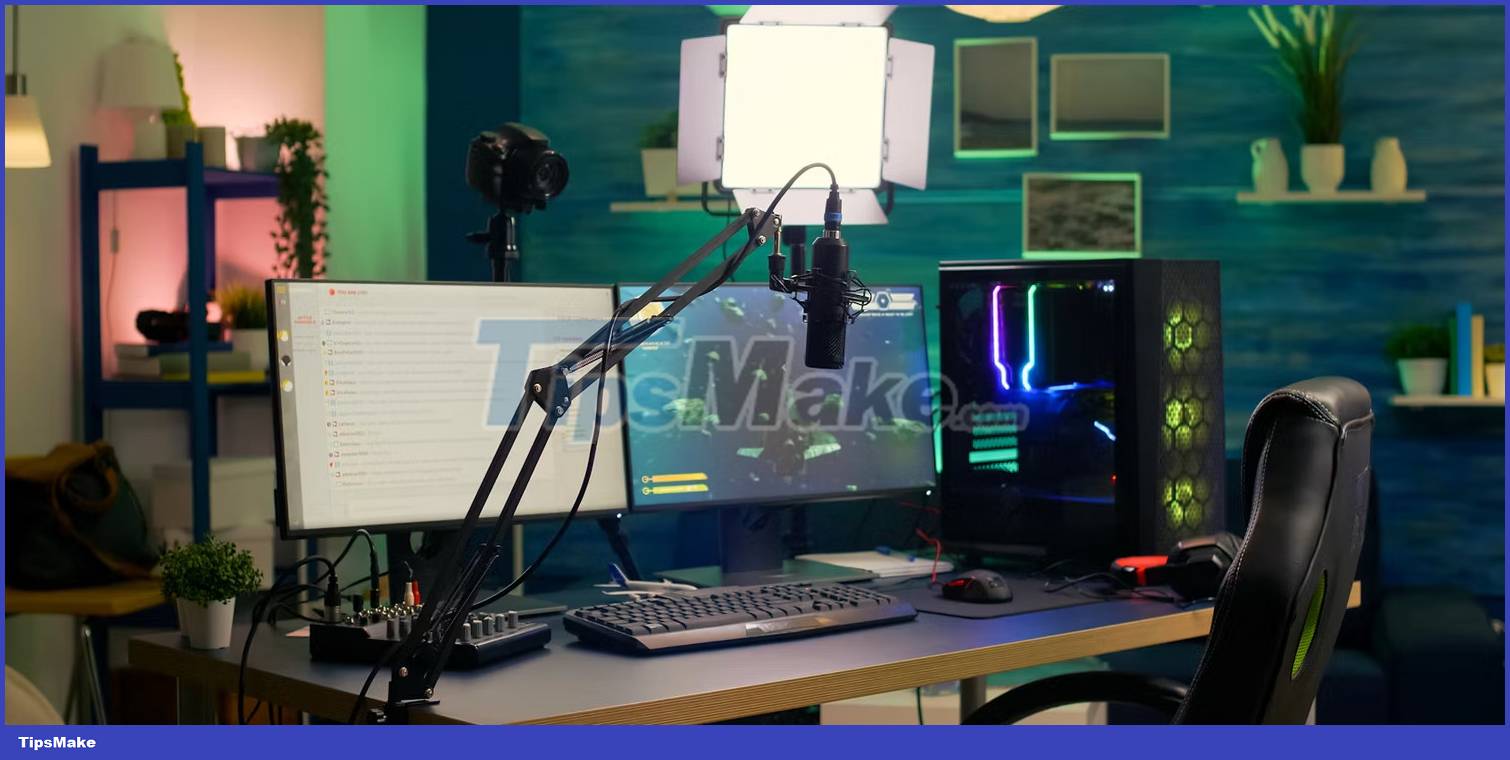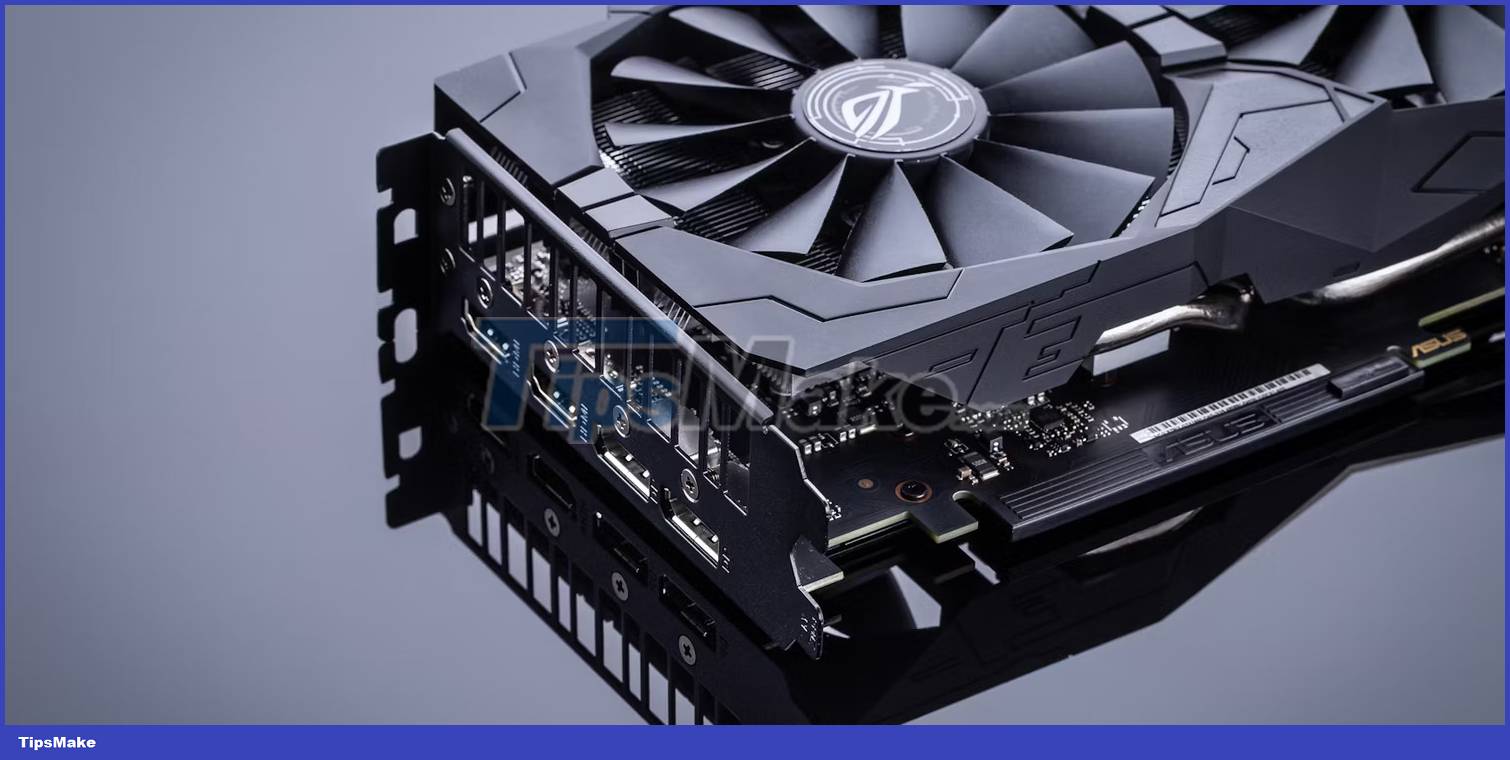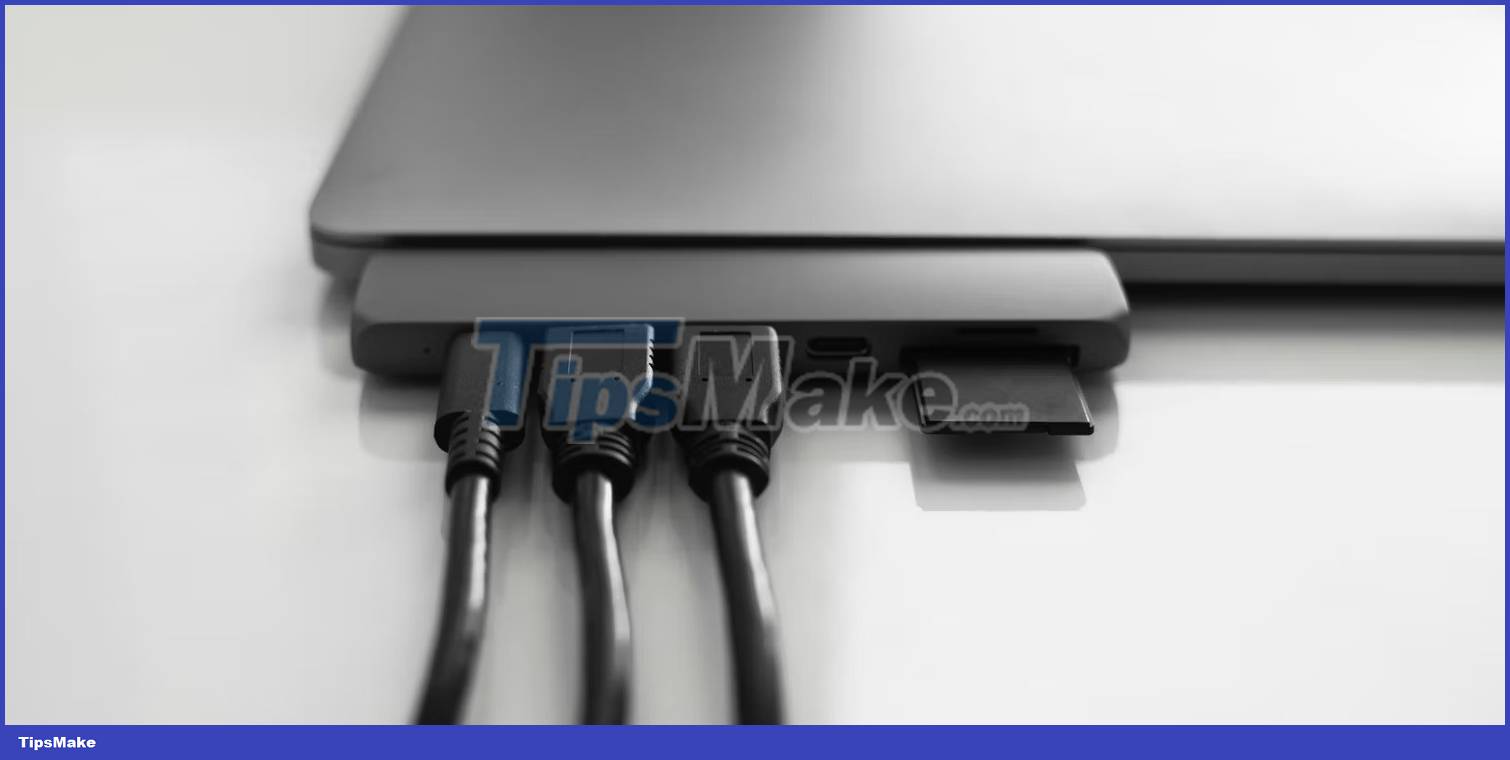5 main notes when using multiple screens with a laptop
Multiple monitors can greatly improve productivity because you have more screen space to work with. But if you're considering using a second screen with your laptop, there are a few additional things to consider.
1. Build setup
The first thing you need to prepare is the actual setup, including display output options, as that will determine the display you can buy.
If you have an older laptop, you may have both HDMI and Mini DisplayPort available. This means you can connect two displays without worrying about splitters or adapters. On newer laptops, you may only see an HDMI port or a DisplayPort-capable USB-C port.

Look up your laptop's manual to check its port specifications. For example, you need DisplayPort or HDMI 1.3 (or higher) if you want to use a 1080p display at 144Hz. Being aware of your laptop's capabilities can save you from making expensive purchases that you may not be using to its full potential.
Next is the cable. Buy a high-quality HDMI cable compatible with your monitor's resolution. While standard HDMI cables can work on most displays, it's important to test the speed to ensure high display quality. Although most HDMI cables are similar, some variations of HDMI cables can be confusing. This also applies to USB Type-C cables. Not all USB Type-C cables are constructed the same, and using the wrong cable can cause trouble.
The actual connection part is very simple and TipsMake has covered how to connect multiple monitors to your laptop.
Just remember that there's no point in buying a top-of-the-line gaming monitor and then finding out later that your laptop doesn't have the screen output capabilities to take advantage of the high refresh rates and any other features the monitor doesn't have. Your image may have .
2. Organize your desk
Plugging an external monitor into your monitor almost certainly means you'll have to place it in an appropriate spot on your desk so you can use your laptop screen as a secondary display. At this stage, if you still want to use your laptop keyboard, things can get a little tricky.

Remember that as soon as you decide to add an external monitor to your laptop, you'll be transitioning to a workstation-style desk. While you can increase productivity by placing the monitor next to your laptop and plugging in the necessary cables, that doesn't provide the best experience.
You should use an external keyboard, mouse, and stand to keep your laptop running. It will give you a more desktop feel and ensure you can place everything in the most convenient location possible.
At this point, you'll start to see another problem: A messy pile of cables on the table. You can hide them, but properly managing these cables will be extremely helpful when making changes, moving, or when you have to unplug your laptop to use it away from your desk.
If you have a small desk or if you find a monitor stand takes up too much space, you should get a monitor stand. It will greatly improve the look of your setup while also giving you more flexibility in positioning your monitors.
3. Decide on the optimal number of screens
How many screens you need depends on what you'll be doing most of the time with your laptop. For most people, a secondary screen is enough. So if you're looking to build a curved, triple-monitor workstation, save your money and buy a good widescreen monitor with a high refresh rate, low response time, and good color accuracy.

In fact, studies have also verified this fact. For example, Microsoft's large-screen user experience was found to use a dual-monitor setup that can increase productivity anywhere from 9 to 50%.
However, there are use cases where adding three or more displays would be beneficial. If you trade, work with spreadsheets, are building a multi-monitor setup for emulation-based games, or need screen space, don't be afraid to use multiple monitors.
Doing so will increase the cost and complexity of the setup. To control this, invest in a good home screen and save some money for the others.
4. Performance issues
Since we are talking about laptops, performance is a big question. Unlike a desktop, where you can just plug the display directly into the GPU, a laptop's display output may or may not be mapped to the discrete GPU, and that can be a problem.
If the laptop's display output connects to the integrated GPU, that means the external display will also be powered by the integrated GPU. So, when you are running performance-intensive programs or games that require a dedicated GPU, communication between the two GPUs can cause performance issues when using an external display.

These problems may not be easy to see. Either way, it's best to make sure your graphics card can handle dual monitors. Most modern laptops with a dedicated GPU have a display output that connects directly to the dedicated GPU, so chances are yours does too.
Both Nvidia and AMD provide control panel utilities that allow you to modify these settings, meaning you can change the type of GPU your laptop uses to run the external display. If you care about performance, using a dedicated GPU is a better choice, otherwise your integrated GPU can handle the rest. However, keep in mind that depending on your laptop hardware, you may or may not have these options. Additionally, MUX switches can help improve performance by sending graphics data directly to the display without having to go through the CPU first.
5. Is there a dock attached?
If your laptop has Thunderbolt 4 ports, docking stations look promising. You can connect all your displays, peripherals, network cables, etc. and charge your laptop via a single USB-C cable.

However, getting the right dock is important here. You will have to make sure that the dock's display ports support the display so you can get the required resolution and refresh rate. Last but not least, make sure the dock supports USB-C Power Delivery; otherwise, you will need another cable to charge your laptop if it supports USB-C charging.
Using multiple monitors can dramatically increase productivity and help you get more done with less effort. Deciding on a monitor and setting the whole thing up can be a hassle, but it's worth it in the end.
You should read it
- How to set up different wallpaper images on each Windows 10/11 screen
- How to use 2 screens on a computer
- How to use multiple external monitors on Ubuntu
- How to configure multiple monitors in Windows 11
- How to adjust the light of multiple screens with the Twinkle Tray
- How to Connect Two Monitors to a Laptop
- How to set the resolution for many Windows 10 screens
- How to Connect Two Monitors
May be interested
- How to pin notes on Apple Notes - Mark important notes
 the apple notes app offers a note pinning tool that makes it easy to organize notes and keep your most important notes at the top so you can access them faster.
the apple notes app offers a note pinning tool that makes it easy to organize notes and keep your most important notes at the top so you can access them faster. - Two ways to pair the screen in Windows 7
 pairing 2 computer screens windows 7 allows you to use 2 screens on win 7 at the same time to work and view more data. this can be done by pressing the shortcut or changing the screen resolution settings.
pairing 2 computer screens windows 7 allows you to use 2 screens on win 7 at the same time to work and view more data. this can be done by pressing the shortcut or changing the screen resolution settings. - How to set the resolution for many Windows 10 screens
 we can choose different resolutions for multiple monitors on the connected monitor for easy viewing.
we can choose different resolutions for multiple monitors on the connected monitor for easy viewing. - How to turn an old laptop screen into a magic mirror
 laptops cannot exist forever, but the screens inside them are possible. even if the main computer is broken, you can extract the display panel and reuse it.
laptops cannot exist forever, but the screens inside them are possible. even if the main computer is broken, you can extract the display panel and reuse it. - Intel presents 4-screen laptop
 tangent bay is a 15-inch prototype with a main lcd screen of the same size and 3 extra oled touch screens above the keyboard.
tangent bay is a 15-inch prototype with a main lcd screen of the same size and 3 extra oled touch screens above the keyboard. - How to transfer notes from Evernote to Mac's Notes
 the latest operating system version of mac os x el capitan has upgraded many new features to support users, including the ability to copy notes from evernote software to notes
the latest operating system version of mac os x el capitan has upgraded many new features to support users, including the ability to copy notes from evernote software to notes - HP 'floats' with a laptop with two multi-touch screens
 the us computer company has unveiled a concept laptop at the ces exhibition, opening a future for desktop replacement laptops.
the us computer company has unveiled a concept laptop at the ces exhibition, opening a future for desktop replacement laptops. - Close up of Acer Iconia two-screen laptop
 laptop two acer iconia screens provide a bold breakthrough when removing physical keyboard to replace with a sharp touch screen. the main screen shows true color and quite flexible touch features
laptop two acer iconia screens provide a bold breakthrough when removing physical keyboard to replace with a sharp touch screen. the main screen shows true color and quite flexible touch features - How to set password for Notes application on iOS 11
 securing important information on the phone is always a top concern of users. apple also understands its customers' needs and has set up security features for notes applications - the app records what to do or sensitive information that users don't want to see. in this article, tipsmake.com will guide you to set notes notes on ios 11.
securing important information on the phone is always a top concern of users. apple also understands its customers' needs and has set up security features for notes applications - the app records what to do or sensitive information that users don't want to see. in this article, tipsmake.com will guide you to set notes notes on ios 11. - How to save notes as photos with Marked.cc
 marked.cc will transfer the notes as notes so we can open and share notes whenever we want.
marked.cc will transfer the notes as notes so we can open and share notes whenever we want.









 AMD releases a new chipset driver update package for Windows 10 and 11
AMD releases a new chipset driver update package for Windows 10 and 11 Things you need to know about NVMe SSDs
Things you need to know about NVMe SSDs 10 things to do when using SSD hard drives on Windows
10 things to do when using SSD hard drives on Windows iPad Pro 2024 will have a high-end OLED screen and 4TB of internal memory
iPad Pro 2024 will have a high-end OLED screen and 4TB of internal memory It's 2024! Can AMD graphics cards surpass Nvidia in ray tracing capabilities?
It's 2024! Can AMD graphics cards surpass Nvidia in ray tracing capabilities? 5 Best SSDs for PS5 in 2024
5 Best SSDs for PS5 in 2024